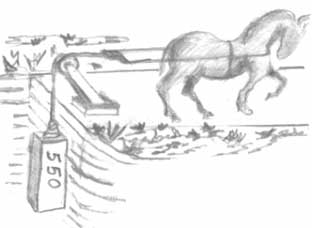When James Watt was perfecting his own incarnation of the steam engine, he realized that there was no convenient way to quantify the performance of each variant of the engine. Obviously, a larger engine could do more work . . . but just how could he best define exactly how well any given design would perform? Further, how could he do it in terms familiar to energy consumers of the day so that they could make accurate comparisons?
A major energy consuming task of his time was the transportation of coal out of the mines. Energy sources of choice were the small ponies bred for their ability to work inside tight confines of a mine. Watt's studies of these sturdy little animals deduced that on average, each of these horses could produce a sustained pulling force that would lift 550 pounds of weight a distance of one foot in each second.
He settled on the constant of 550 ft-pounds/second as the amount of work that one could accomplish with "1 horsepower."
 Larger Image
Larger Image